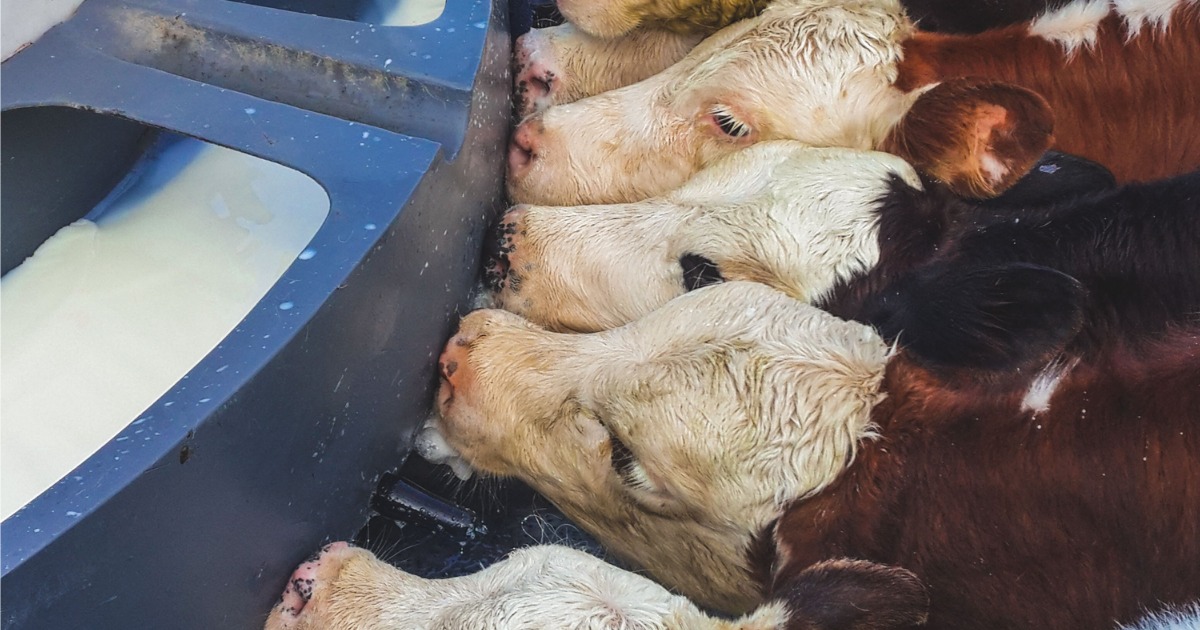Choosing between skim and whey
Choosing a calf milk replacer (CMR) can be a minefield with so many available. The CMR market is easily divisible into two groups; whey-based powders and skim-based powders providing the two main sources of dairy protein. Choosing the right powder for your system is not only vital to the productivity of pre-weaning calves but the lifetime performance and profitability of each animal.
Establishing the calf’s requirements
A calf is born in a pre-ruminant state – all four stomach chambers are present, but the Rumen is undeveloped. The Abomasum and Omasum make up around 70% of the digestive tract in a newborn calf. In contrast, this will eventually only account for 30% and the Rumen and Reticulum once developed, will dominate the remaining 70%. The act of suckling causes the reflex of a muscular fold in the wall of the rumen called the oesophageal groove. This enables milk to be delivered directly into the abomasum. At this stage the calf is entirely dependent on milk or CMR as a source of digestible proteins, fats and carbohydrates.
In the first weeks of life rennin is the predominant enzyme for protein digestion. For the first few days the abomasum is non-acidic, this allows the antibodies in colostrum to pass unharmed for absorption through the gut lining. The abomasum then becomes acidic and aids protein breakdown. In time the level of pepsin produced by the calf also increases allowing for the digestion of non-milk proteins.
Protein Content
The protein in skim-based powders is found in the form of casein and in whey-based powders in the form of albumin and globulin. Whole milk contains both casein and whey protein therefore calf physiology is designed to digest both forms. The protein composition of whole milk is typically 80% casein and 20% whey.
Method of digestion
The method of digestion is where skim and whey-based powders differ the most. When a skim-based milk replacer enters the abomasum, it forms a clot or curd under the influence of enzyme’s; rennin and pepsin. This is the same process as making cheese and using rennet to coagulate milk proteins. The clotting of the casein allows for slower breakdown and a steady release of nutrients. The clot can take as long as 12 hours to be digested. This makes a skim-based powder better suited to those feeding once a day after 28 days as the calf will feel more satisfied for longer.
Skim-based milk replacers will also contain whey. When the casein clots the whey is separated and moves more quickly through the digestive tract for absorption of nutrients in the small intestine. When feeding a whey-based powder no clot is formed and the entire milk feed is digested more quickly – usually within 2-3 hours. This can be thought to stimulate hunger and lead to higher concentration intakes from an earlier age.
Check out our Wynngold Stellar Whey-based powder here
Both skim and whey-based powders provide the amino acid requirements for the calf and, therefore, no differences should be seen in feed conversion efficiency or daily gains.









